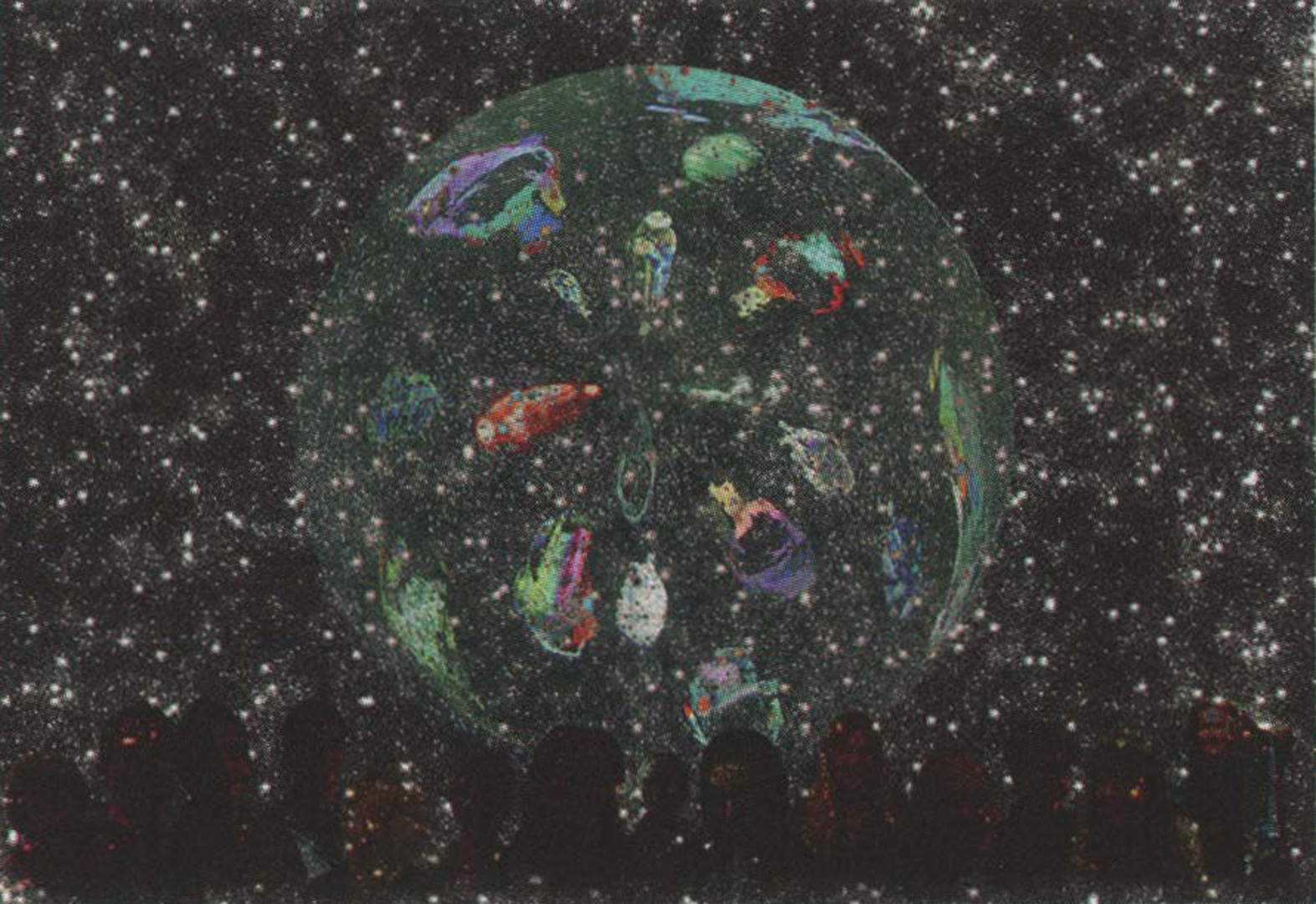Daria Dorosh: Plays Well with Others
Artist(s):
Title:
- Plays Well with Others
Exhibition:
Creation Year:
- 2004
Medium:
- globe on stand with projector and computer
Size:
- 60-inch diameter globe on a 25-inch stand
Category:
Artist Statement:
Plays Well with Others is a collaboration in which a team of artists, educators, game designers, programmers, scientists, theorists, and social activists explore the unique dynamics of spherical-globe projection. I brought the group together to engage in a dialog with ARC Science Simulations after seeing the OmniGlobe at ACM SIGGRAPH 2003 Emerging Technologies. Our program for the OmniGlobe, v.1.0 was part of my art exhibition, Daria Dorosh: Plays Well with Others, shown at A.I.R. Gallery in New York City in April 2004. The exhibition gave us the opportunity to see our work projected in the globe for the first time. We created an audio/visual program for the globe that reflected our personal and professional interests. Working individually and collaboratively, some of the shared themes that emerged were culture, identity, location, pattern, re-use, and play. The exploration continues as we test new capabilities provided by ARC Science and continue pushing the boundaries of our experience with the OmniGlobe. The content creators and collaborators are ARC Science, Galen Brandt, Kate Brehm, Clilly Castiglia, Steve DiPaola, Daria Dorosh, Carter Emmart, Ian Epps, Kevin Feeley, Mary Flanagan, Harriet Mayor Fulbright, Lizbeth Goodman, Gayil Nalls, Jeremi Sudol, and Camille Utterback. Viewers can access the work from a touch screen or by using a track ball. The spherical projection choreographs the viewer to be an active participant by choosing a vantage point for seeing the work. The interaction is serious fun, a game of chance and choice. The curved screen changes everything, both for us as content creators and for the viewers. The medium of the OmniGlobe demands that we experience and articulate our work from a different perspective. It raises some interesting questions: How does creating content for a sphere change the creator’s experience of organizing space? Conversely, how does designing for a flat rectilinear pictorial space affect our perception of the world? In Plays Well with Others, we have stepped across the boundaries of our disciplines and professional roles into digital territory where definitions of space, scale, location, shape, authorship, art, design, and communication are, at best, blurred.
Technical Information:
The OmniGlobe is a large spherical, rear-projection screen illuminated internally by a digital projector in its supporting base. This spherical computer display can be used interactively for presenting global data in its natural geometry or any content that lends itself to viewing “in
the round.” It is a true 360 -degree display system.
How It Works
The projector image is focused up from the base onto an internal dispersing mirror high in the screen. This convex element spreads the geometrically corrected image over the surface of the spherical screen, which is then visible on the external surface. ARC Science has received a patent for this display concept. Images for the OmniGlobe are mapped into a special geometry for spherical projection. On a flat monitor, these images appear as a circular “super fisheye” view, with the point that will be at the bottom of the spherical screen at the center and the pixels around the outer edge squeezed
toward the screen top. OmniGlobe Content Originally conceived for Earth-related themes, spherical projection offers many other interesting visualization possibilities. Unlike conventional projection, whether on flat or concave screens, what is seen depends on one’s position. This provides an opportunity for user interaction, and a personal vantage point within the real 3D space of the globe. To view our surroundings on the surface of a spherical screen is to view the world inside out. It translates surprisingly well.
Content for the OmniGlobe can be rectangular image “maps” representing 360 degrees around the globe and 180 degrees from the bottom to the top. ARC software can correctly “wrap” such images on the screen fast enough to produce the illusion of smooth rotation and user track-ball navigation. Alternately, pre-rendered movies can be created using standard 2D or 3D software along with ARC authoring software.





